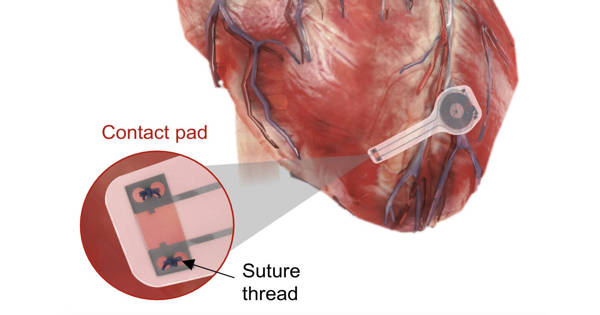An innovative tool that electrically changes one metal into behaving like another to be used as a catalyst for accelerating chemical reactions has been developed by a team of energy researchers led by the University of Minnesota Twin Cities.
The created device, known as a “catalytic condenser,” is the first to show how using alternative materials that have had their properties electronically altered might result in quicker, more effective chemical processes.
The discovery paves the way for novel catalytic technologies using non-precious metal catalysts for critical uses such as renewable energy storage, the production of renewable fuels, and the production of sustainable materials.
The study was chosen as an Editor’s Choice publication and made available online in JACS Au, the American Chemical Society’s premier open access journal. The group has a provisional patent on the device and collaborates with the University of Minnesota Office of Technology Commercialization.
For the past century, chemical processing has relied on the utilization of particular materials to support the production of chemicals and materials that we use every day. Numerous of these substances have distinct electrical surface properties, including the precious metals ruthenium, platinum, rhodium, and palladium. They are essential for regulating chemical reactions because they may function as both metals and metal oxides.
Most people are probably most familiar with this idea in regard to the rise in auto thefts involving catalytic converters. Rhodium and palladium are precious metals that are found in catalytic converters. In fact, palladium occasionally costs more than gold.
These pricey materials are frequently in short supply worldwide and have emerged as a significant roadblock to the advancement of technology.
The researchers used their understanding of how electrons interact at surfaces to create this strategy for adjusting the catalytic characteristics of alternate materials. The researchers investigated a hypothesis that the metal oxide may imitate the properties of other materials by changing the electron configuration of one material.
Using various thin film technologies, we combined a nano-scale film of alumina made from low-cost abundant aluminum metal with graphene, which we were then able to tune to take on the properties of other materials. The substantial ability to tune the catalytic and electronic properties of the catalyst exceeded our expectations.
Tzia Ming Onn
“Atoms really do not want to change their number of electrons, but we invented the catalytic condenser device that allows us to tune the number of electrons at the surface of the catalyst,” said Paul Dauenhauer, a MacArthur Fellow and professor of chemical engineering and materials science at the University of Minnesota who led the research team. “This opens up an entirely new opportunity for controlling chemistry and making abundant materials act like precious materials.”
The catalytic condenser device moves and stabilizes electrons at the catalyst surface using a mixture of nanoscale films. This concept uses a special mechanism that combines graphene, metals, and metal oxides to enable rapid electron flow on surfaces that may be tuned for chemistry.
“Using various thin film technologies, we combined a nano-scale film of alumina made from low-cost abundant aluminum metal with graphene, which we were then able to tune to take on the properties of other materials,” said Tzia Ming Onn, a post-doctoral researcher at the University of Minnesota who fabricated and tested the catalytic condensers. “The substantial ability to tune the catalytic and electronic properties of the catalyst exceeded our expectations.”
Widely useful as a platform device for a variety of manufacturing applications is the catalytic condenser design. This adaptability is due to the active surface layer’s incorporation of graphene in its nanometer-scale manufacturing.
With different variations in the composition of a strongly insulating interior layer, the device’s ability to stabilize electrons (or the lack of electrons known as “holes”) may be controlled. Any base catalyst material with additional additions can be incorporated into the device’s active layer, which can then be modified to achieve the characteristics of more expensive catalytic materials.
“We view the catalytic condenser as a platform technology that can be implemented across a host of manufacturing applications,” said Dan Frisbie, a professor and head of the University of Minnesota Department of Chemical Engineering and Materials Science and research team member. “The core design insights and novel components can be modified to almost any chemistry we can imagine.”
The group intends to carry on its investigation of catalytic condensers by using precious metals to address some of the most significant sustainability and environmental issues. Several parallel initiatives are already underway to produce the necessary molecules for renewable polymers, store renewable electricity as ammonia, and clean gaseous waste streams, all with funding from the U.S. Department of Energy and National Science Foundation.
The experimental invention of the catalytic condenser is part of a larger mission of the U.S. Department of Energy, and this work was funded by the U.S. Department of Energy, Basic Energy Sciences Catalysis program via grant #DE-SC0021163.
Additional support to fabricate and characterize the catalytic condenser devices was provided by the U.S. National Science Foundation CBET-Catalysis program (Award #1937641) and the MRSEC program DMR-2011401. Funding was also provided by donors Keith and Amy Steva.
The Characterization Facility at the University of Minnesota was used for electron microscopy work. Researchers from the University of Massachusetts Amherst and University of California, Santa Barbara were also involved in the study.
















